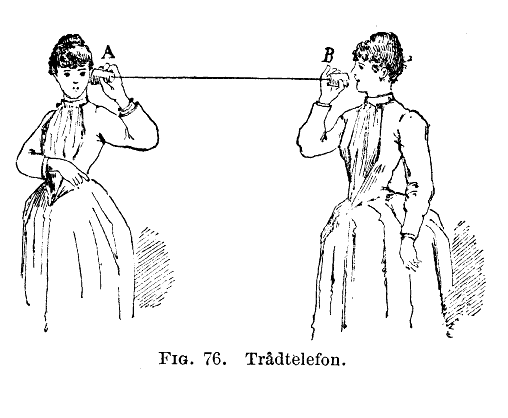 How does the ear collect sound? Does the shape of the ear matter for hearing? Can you really hear someone talking through two tin cans connected by a string? There are countless questions that can be investigated by studying the science of sound. According to the Next Generation Science Standards, first and fourth grade students are expected to demonstrate an understanding of sound and its properties. In the age of video chatting and modern technology, students might find it difficult to envision the communication channels of long ago such as speaking tubes or the old tin can and string telephone (see photo below). Reinventing these methods of communication is a fun opportunity to introduce how sound travels. And since sound waves can’t be seen by the naked eye, investigations and videos are valuable resources to support students’ understanding of how sound moves from one place to another.
How does the ear collect sound? Does the shape of the ear matter for hearing? Can you really hear someone talking through two tin cans connected by a string? There are countless questions that can be investigated by studying the science of sound. According to the Next Generation Science Standards, first and fourth grade students are expected to demonstrate an understanding of sound and its properties. In the age of video chatting and modern technology, students might find it difficult to envision the communication channels of long ago such as speaking tubes or the old tin can and string telephone (see photo below). Reinventing these methods of communication is a fun opportunity to introduce how sound travels. And since sound waves can’t be seen by the naked eye, investigations and videos are valuable resources to support students’ understanding of how sound moves from one place to another.
Use these videos from PBSLearningMedia and KQED QUEST to learn more about the science of sounds.
Hearing
This video segment begins with a demonstration of how a sound is made and then shows how a sound wave is transmitted to the brain through the parts of the ear. Discover why loud sounds can be permanently harmful to your ears and how the cochlea is involved in helping you maintain your balance.
Understanding Vibration and Pitch
This video segment presents a variety of sounds—from animals to machines to musical instruments —while introducing the basic concepts of vibration, volume, and pitch.
Design Squad: Sound
In this video segment adapted from Design Squad—a PBS TV series featuring high school contestants tackling engineering challenges—two teams compete to create unique but usable instruments for a local band. In the process, the teams learn about the physics of sound and music and then apply this knowledge to the construction of their own instruments. Watch to find out which instruments the band finds worthy of debuting in their next live show.
